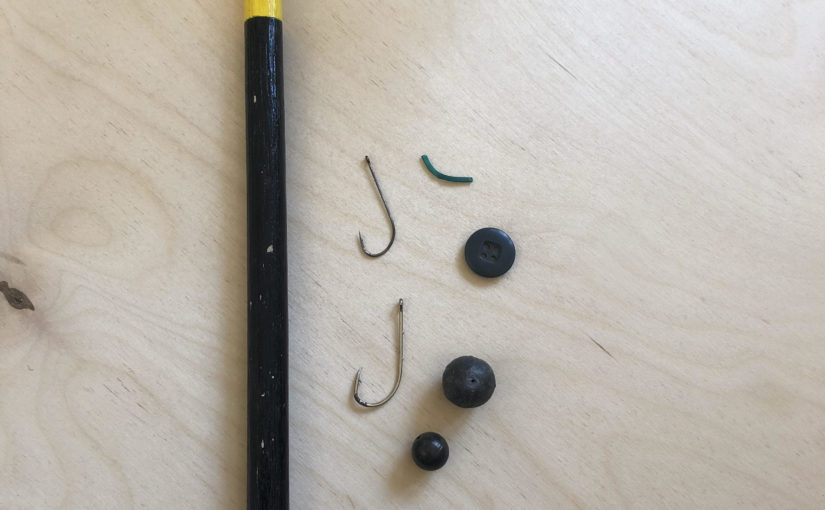My father grew up in Scotland but his mother was from Bangor and so most of his summer holidays were spent in the town and sea fishing from the rocks and pier were a common pastime. My earliest fishing outings from the rocks at Strickland’s Glen were influenced by the tactics and techniques that my father learnt from that time. As I have grown disillusioned with modern tackle catalogues filled with unnecessary equipment, the simplicity and accessibility of the DIY rigs have become more appealing. It is my hope that this post might encourage someone to dig out the rod in the garage and try some rock fishing on their holiday.
The species you are likely to catch with this set up are varied but Pollock and Wrasse would likely be the target species from the rocks around the coasts of Ireland. The set up could not be more simple and is a simple sliding float rig allowing you to adjust the depth of fishing to find the fish. I typically start with about 8 feet below the float, to the hook, on a rising tide and adjust by 6 inches or so every hour as the tide fills. It is alway worth adjusting the depth, up or down, if you are not getting any action. Nowadays there are many float kits, available in all tackle shops, containing all you need to set up a sliding float. These are great but if you are bringing a family group together the cost soon mounts up and pieces of the kit will always be lost so it’s always worth having a handful of buttons, matchsticks and elastic bands in the tackle bag.
Historically, my father mentioned that he would have made balsa floats out of scrap balsa wood, the edges would be sanded and a wire loop would be lashed to the bottom, if you were feeling flush you might have added a swivel. As fishing in Bangor was popular off the piers, your float had to be distinctive to stand out in the crowds and you would have got creative with any gloss paint you could find in a shed or garage. With a nod to nostalgia, most local tackle shops in Ireland still sell hand painted balsa floats and I do still like to use them instead of the plastic modern alternatives. If you really want to go DIY, a drilled Jiff Lemon works as an alternative.
The snap below shows what you will need to rig this up. I attach photos of two hooks, the heavy gauge that my father always likes to use and the lighter hook that I have had more recent success with.

The knot that will be used for the elastic and matchstick is the same as one as you might have used as a kid to make a ‘blow knot’ where you tie a knot in a rope, hold both hands, blow and pull. The knot disappears.

The process is outlined below:
- Thread your line through the bail arm on your reel and through the eyes on your rod.
- Leave about 10 feet of line beyond the top ring of your rod
- On the line closest to your rod tip, tie a slip knot as per the photo above and insert a small piece of elastic band to act as the float stop. This elastic will be reeled on to the reel when you cast if you decide to fish deeper. To fish deeper, pull the elastic out and pull the slip knot through. Attach the elastic further up the line.
- Next get a button and thread it up the line, the button will hit the elastic as the float rises and stop the float sliding up the line.
- Next, thread on the float
- Below the float, tie another slip knot and attach a section of matchstick.
- Next attach suitable weights for the float, all coastal tackle shops will have buckets of these weights and they are known as drilled bullets. I like my floats to fish low and bob so a large and a small one usually works well for the type of float in these pictures.
- Next attach another slip knot and a match stick.
- Attach the hook using a clinch knot

It’s not a great photo but you can see the order of items, elastic band, button, float, matchstick, weights, match stick and then hook. Ideally you would also add a swivel before the hook and attach a length of lighter, sacrificial, hook length but it’s not necessary.

With this rig, using a limpet as bait, you will pick up Pollock and Wrasse from any rocky outcrop with a good drop off of depth close in.

